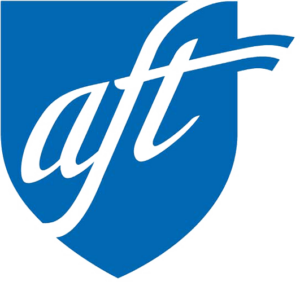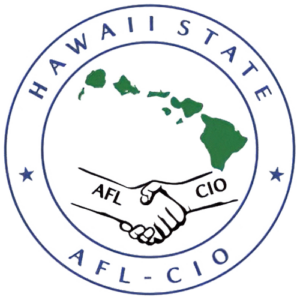Frequently Asked Questions (FAQs) regarding the 2015-2017 Tentative Agreement
What happens if the Legislature fails to fund the collective bargaining agreement?
Under Article XXX, Duration, UHPA included a provision that indicates if general funds are not allocated by July 1, 2015, then the Agreement does not go into effect. There would be no contract. Pursuant to Chapter 89, the bargaining unit will then have the legal right to strike. The consequences arising out of such action will rest with the Legislature. Our bargaining unit would be free to take whatever action it deemed appropriate under such circumstances.
Why was the limitation on overloads for the Community Colleges added to the collective bargaining agreement on overload?
Vice President Morton expressed the need to provide consistency in policy and application across campuses as it pertained to the administration of overload salary payments. UHPA has never encouraged overloads, i.e., teaching additional credit hours during the academic year above the maximum teaching load, because it undermines the union’s historic efforts to reduce the CC instructional workload. It may be necessary for the administration to pay overloads when enrollments fluctuate or there is a need to replace a position during the semester. However, overload should not be a means to increase faculty salaries. Rather than the use of overloads, the campuses should be encouraged to hire additional positions. In the last contract agreement, UHPA was able to reduce workload from 30 to 27 credit hours of instruction per academic year. If faculty members are encouraged to take on overloads, they undermine our objective to reduce the workload to 24, and that is why we agreed to this propose change.
What elements make the intellectual property of our current contract so good?
Part of the answer is found in the broad scope of the language. It gives rights to the individual faculty member the right to create and own intellectual property while the faculty member is concurrently working for the University of Hawaii as a state employee. The UH has a good mechanism for encouraging the development of IP by assisting funding the cost of patenting new ideas then sharing the future profits through the formula in our contract. Faculty members also have the option of developing IP without support from the institution and keeping full ownership rights even if it is created in the context of their faculty work.
Where will the duration of the two-year contract put us in relationship to the expiration of the contracts for other public sector employee bargaining units?
There are fourteen bargaining units in the State of Hawaii. Depending on the terms of the contract, we may be in phase or out of phase with other bargaining units. This settlement will put us in phase with the expiration date of nearly all contracts, which will expire on June 30, 2017. When all the public sector unit contracts expire at the same time, it allows UHPA to coordinate our bargaining with other public sector unions taking a unified position at the state-negotiating table. This is especially useful in bargaining over the EUTF employer contributions to the health insurance programs. We have collaborated with other unions in the past, and in the future we will look to finding a coordinate position with respect to the issues of paid childcare leave and housing for all public employees on a broader statewide position.
If there are nine bargaining units yet unsettled for FY16-17, what happens if they should get more?
We cannot predict what will happen. However, because we are one of fourteen statewide public sector bargaining units, there cannot be too much variance in the total costs of the settlements. Our total salary increases totaling between 4-5% compounded fall in the same range as the other settlements that have been reached by UPW, HGEA, and HSTA. Faculty members need to individually determine whether the salary increases in the contract are reasonable over the two years. Will these increases lead us to other changes in the future? Overall, the growth of salaries in one bargaining unit will potentially help the growth of another in the future. The value of our contract must be measured against how it addresses the needs of the faculty.
If our contract is settled early, we would be the first to claim a portion of the State’s budget. As other contracts are settled, more and more of the budget will be claimed. We do not want to be the last to settle, which could potentially leave the state less able to pay our increases.
What should we do with the tentative agreement materials we have received?
When faculty members get this material, you should first read the individual Tentative Agreements, which are fairly self-explanatory and provide you with the changes that have been made to the contract language. If you are not familiar with the current 2009-2015 Agreement, you may want to review it to see where the changes have occurred. Or, look at the new 2015-2017 Agreement that incorporates all changes made in the TAs to get a clear perspective of the complete contract before you vote. If you have questions, please bring them forward by email to ta@uhpa.org.
Once you have familiarized yourself with the information, you should then be sure to vote through the link that you were sent with the email containing the materials.
Will there be voting by paper ballots on my campus?
No, there will not be balloting on campus. This will be the second time UHPA will be using electronic voting for the ratification of the collective bargaining agreement. We are confident in the safety and use of this voting system, and we have been using it for our member based Board of Director elections as well. We are making efforts to have it simple and straightforward system that you should have already received via email. For those with special needs related to voting, please contact the UHPA offices directly at 593-2157.
What is impact of a no-vote on ratification?
If this should occur, we would need to return to the table and start over. If that is the wish of the membership, UHPA would comply. This is a serious vote and faculty members should determine if this contract is in the best interest for themselves and the institution. View YouTube
I have been looking at the proposed UHPA contract, and I am still not sure about the way that lecturers will be reimbursed for teaching a science lab. The contract seems to be saying that lecturers will be paid according to “teaching equivalency” rather than credit hour. Then 3.0 hours of lab instruction would be reimbursed at the equivalent of 2.5 credit hours. That would be 2.5 times what a lecturer is now being paid for the same lab. Am I correct in this?
The intent of the 2015-2017 TA language under Article XXI, Salaries, D. Lecturer Fee Schedule (“Subject to appropriation of State General Funds”) is to provide equity with full-time instructional credit – in other words if a non-lecturer receives “X” credit for teaching a science lab, then Lecturers will not receive less….
Under the current agreement there is no provision for paid family leave. One can use sick leave or use leave without pay. This is archaic!
A few days ago, June 23, 2014, President Obama agreed that the United States should join the rest of the industrialized world and offer paid leave for mothers of newborns. See the infographic comparing maternity leave by country at: http://blogs.babycenter.com/mom_stories/is-president-obama-your-ticket-6252014-to-paid-maternity-leave/
Our union should be advocating for mothers and families. It is unbelievable that a mom cannot get a single day of paid leave to have a baby. Giving birth is not a sickness, and its important to protect sick leave for when someone is actually ill. As a bare minimum, moms should be able to get six weeks of paid leave to give birth and start their newborns life off on the right foot.
Current policy: “Faculty Members shall have the right to unpaid family leave of absence in connection with the birth, adoption, or care of a child, or for the care of a spouse, domestic partner, parent, father-in-law, or mother-in-law with a serious health condition, in accordance with the applicable state and federal laws and rules.” False
Faculty Members can under our current contract and in the new contract use sick leave accumulation to cover both maternity related absences and also for family leave purposes. Faculty Members do accumulate 1 3/4 days of sick leave per month or 21 days per year. This a general public policy issue that needs to be addressed for all public employees and not just faculty members. UHPA recognizes and wants to address the issue and that is why we established the Joint Committees in the TA on childcare and paid family leave to find solutions. Those committees will begin upon the ratification of the TA and not have to wait for the new contract to take effect.
Re: Compression – Any adjustment for compression? A new set of salary minima by rank for faculty on 11-month appointments was provided. I have been at C5 for approx. 5 years and it appears my pay is that of the newly established minimum – or differently stated – I am here for 20-years and my pay is at the minimum for my rank.
The contract minima for 11-month faculty will have a significant impact in raising the salaries of the community college faculty, but they are just that, minima. We need to continue to raise the minima if we are going to get all salaries to competitive levels. Keeping minima low to avoid the appearance of salary compression does not serve the interests of the bargaining unit, and will ultimately keep all salaries lower. The contract spells out the order in which the salary increases are applied, and the last factor is the minima. In principle, equal pay for equal work is not related to seniority. Seniority is more reflected in promotion through the ranks. In addition, there are provisions for special salary adjustments that can be made based on an argument of salary compression and equity.



